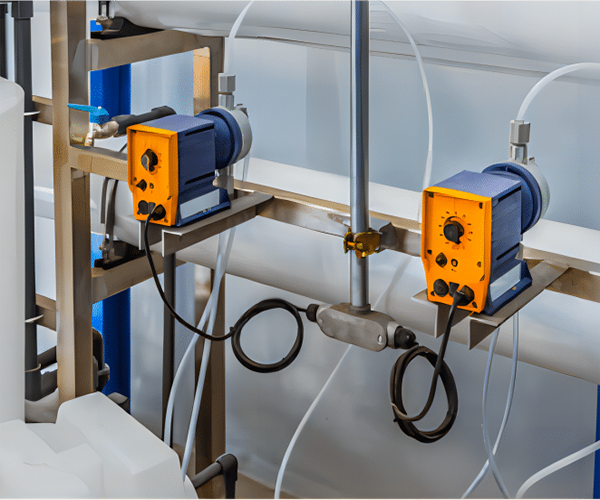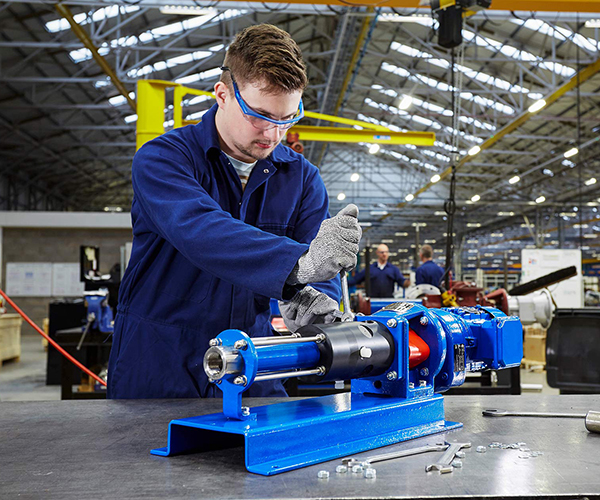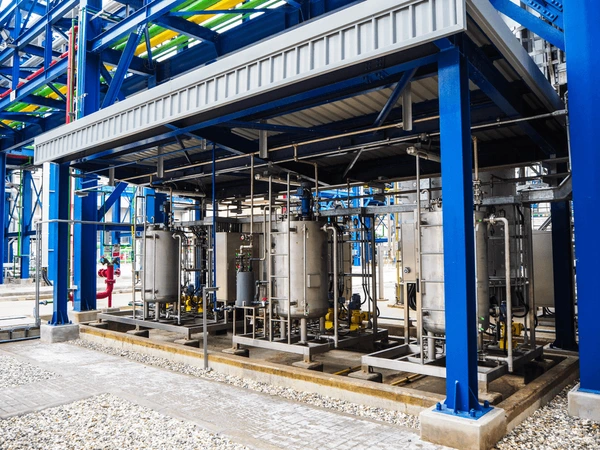
What is chemical dosing system?
March 16, 2024How does a dosing/metering pump work?
The dosing pump draws a certain amount of liquid into its chamber and injects the chemical into the tank or pipe containing the fluid being metered. It is powered by an electric motor or air actuator and has a controller that turns the pump on and off and manages the flow rate.
Types.
1.Diaphragm pumps are positive displacement pumps that use reciprocating diaphragms to move the fluid. They are found to be very reliable because they have no internal parts to rub against each other, creating friction and causing wear. In addition, because they do not require seals or lubrication in the pump head, there is no possibility of oil vapor contamination or leakage of the pumped medium.
2.Mechanical Diaphragm metering pumps have a diaphragm, two valves, a displacement chamber and a drive mechanism. The diaphragm is a flexible diaphragm that vibrates to create suction to move fluid into and out of the pump chamber. It is located between the side of the discharge chamber and the connection flange. The two valves are usually baffle valves or spring-loaded ball valves made of the selected material by chemical compatibility chart. They operate by allowing fluid to move in and out of the chamber.
3.Plunger metering pumps have a Plunger packed by gland packing, two valves, a displacement chamber and a drive mechanism. The Plunger reciprocates in gland packing to create suction to move fluid into and out of the pump chamber. It is located between the side of the discharge chamber and the connection flange. The two valves are usually baffle valves or spring-loaded ball valves made of the selected material by chemical compatibility chart. They operate by allowing fluid to move in and out of the chamber.
4.Solenoid dosing pump is a form of displacement pump that uses a diaphragm and solenoid assembly to discharge fluid into a discharge line.
The solenoid “actuator” consists of a solenoid and spring assembly that is activated/deactivated by a series of electrical pulses. When the solenoid is activated, the solenoid pushes against the diaphragm, displacing the fluid. When the solenoid is deactivated, the spring mechanism returns the diaphragm, allowing more fluid to enter the chamber from the suction line in preparation for delivery.
The dosing aspect is determined by programming the pump to deliver at a rate. This rate can be set at will by the operator, or it can be set based on an external signal, such as from 4-20 mA soft signel, a sensor probe that measures pH. The pump can then proportionally meter its fluid – in this case, it may meter caustic soda based on the correct acidic effluent.
Some electromagnetic metering pumps also allow variable stroke lengths and stroke rates. This allows very high “regulation ratios”, i.e., very high ratios between maximum and minimum potential flow rates.
Solenoid metering pumps or metering pumps are commonly used in water treatment applications such as cooling towers, boilers and industrial wastewater treatment; however, they are used in many different chemical processes around the world.
While there are many types of metering pumps, electromagnetically driven positive displacement metering pumps are preferred in chemical feed applications due to their low cost, ease of use, reliability and high accuracy.
5. Progressive Cavity/Screw pump that allows a certain volume of fluid to pass through a stator and rotor. It is not as accurate as a diaphragm/plunger pump and is only suitable for high viscosity fluids that have a self-lubricating effect to minimize wear. Progressing cavity pumps or eccentric screw Pumps belong to the group of positive displacement pumps. The main components are the rotating rotor and stationary stator. The rotor, hinged or elastically attached on one side, is a round-threaded screw. On the output side, the axial position oscillates. The hollow stator is elastic and has the same pitch length as the rotor. This leaves conveying spaces between the stator and the rotor, which move continuously from the inlet to the outlet side.
Pay Attention
In the process of using a single screw pump, in addition to not idling this point, should also pay attention to other points, to make the single screw pump to achieve the ideal state of use.
1, the new pump or long time out of service single screw pump, before starting the pump body need to inject an appropriate amount of lubricating oil, then use the tool to pull a few laps before use.
2, in the transport of high viscosity or more particle impurities and corrosive medium, should use water or solvent to wash the pump body, to avoid the blockage of medium condensation. 3, winter or low temperature environment to avoid liquid freeze crack, after use, drain the pump body water in time.




